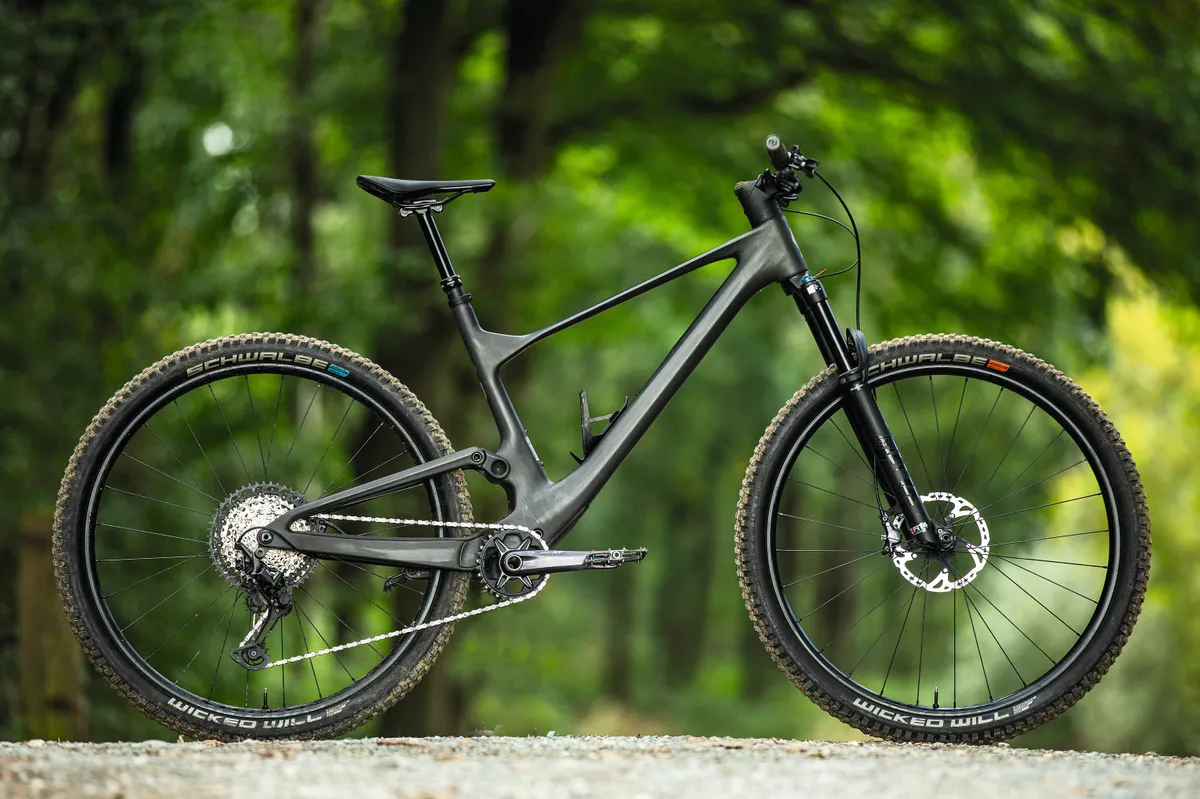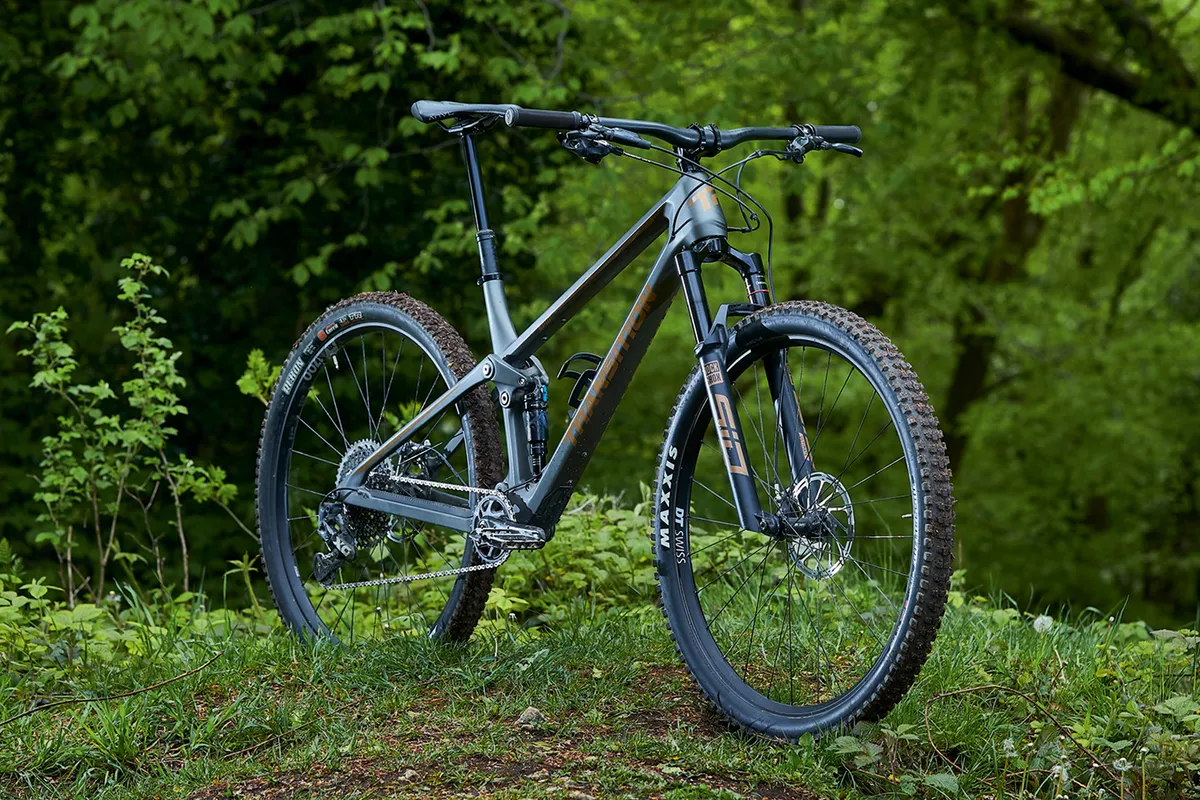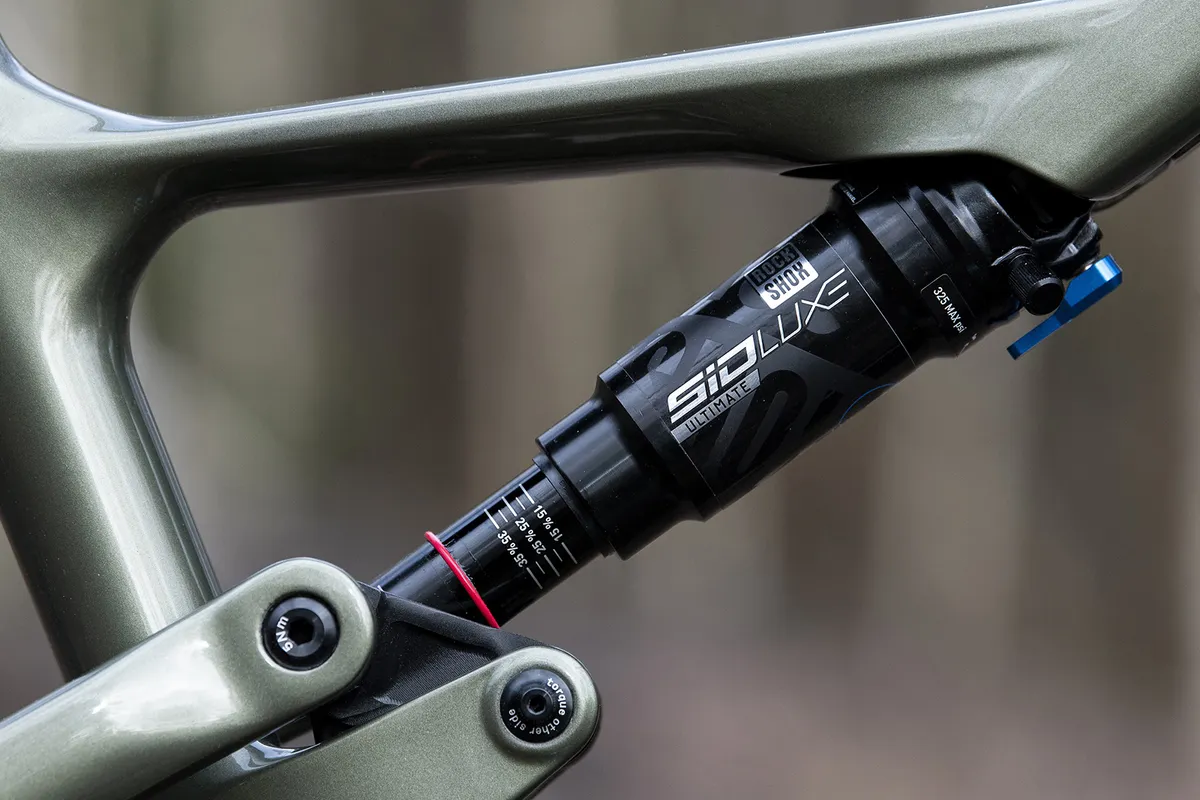The best downcountry bikes can tackle all-day epic rides with ease and efficiency, cover ground extremely fast and have just the right mix of componentry to fly down descents.
Here, we list the best downcountry mountain bikes in 2025, as tested and rated by our expert reviewers at BikeRadar.
We've had plenty of experience with downcountry bikes, with many of us seeing the discipline as one of their favourites.
Many of these bikes started life as race-ready cross-country mountain bikes, but they have been given some extra travel and a more progressive geometry, while retaining their XC speed.
Not all downcountry bikes are built the same, though. While some are more like beefed-up cross-country mountain bikes, others are closer to the best trail mountain bikes – pared-back and adrenaline-seeking.
We've put together a downcountry buyer's guide at the end of this article to help you choose the best downcountry bike for you and to help explain this new category of bike.
Editor's note: this list was updated on 10 June 2025 with our latest, high-scoring downcountry bike reviews, including the Transition Spur Carbon X0 AXS. We have also shared information on how we test downcountry bikes.
Best downcountry mountain bikes of 2025
Mason Raw

- £4,800 as tested
- Pros: Good versatility with plenty of mounting points; steel frame with plenty of finishing touches
- Cons: Requires a bit of saddle shuffling on steep ascents
The Raw's steel frame lends it a comfortable quality that stands out on long rides, leaving you less beaten up than you'd expect from other hardtails.
A variety of mounting points open up bikepacking opportunities on the traditional Dedacciai and Reynolds steel frame.
Mason has brought together versatility and on-trail capability well, making this a serious do-it-all bike.
While the bike climbs well, and with a pokey nature, we found we had to move around on the saddle quite a bit on steeper ascents.
Transition Spur Carbon X0 AXS
SQUIRREL_TEXT_13214337

- £7,999 / $7,899 / €6,999 as tested
- Pros: Great geometry; fun to ride; decent climber; tough-feeling
- Cons: Pricey; no internal frame storage
The Transition Spur is one of the defining bikes of the downcountry category, with its playful ride feel and efficient pedal efficiency making it a joy to ride.
It climbs impressively well, but it doesn't feel flimsy on the way back down like some short-travel bikes.
This comes at a cost, but lower-priced builds are certainly worth a look.
- Read more: Transition Spur Carbon X0 AXS review
SQUIRREL_13214337
Fairlight Holt XT

- £3,709 as tested
- Pros: Amazing ride that gives all-day comfort; adventure-ready mounts
- Cons: High top tube and reserved geometry hinder the Holt on technical trails
The Holt is Fairlight's first mountain bike, and it has been adorned with similar mounts to the brand's bikepacking offerings.
Its Reynolds 853 steel frame offers a forgiving ride without feeling noodly when pushing hard on steep ascents.
The bike suffers on the descents, with its classic XC geometry leading to a twitchy and nervous feeling.
Merida Big.Nine TR 8000

- £5,000 as tested
- Pros: Responsive and direct frame; snappy handling; well-priced
- Cons: Wheels are quite harsh; skinny rubber and 2-piston brakes hold it back on technical trails
The Big.Nine TR 8000 features a full carbon fibre frame that delivers impressive responsiveness down the trail.
This fast-rolling and nimble feel makes tight, twisty trails heaps of fun and spurs you on up the hills.
Narrow tyres and underpowered brakes detract a little on the descents, but the geometry is forgiving of bad line choices.
Scott Spark 910
SQUIRREL_TEXT_13211016

- £5,299 as tested
- Pros: Very fast; devours climbs; clean hardware
- Cons: Integration won't be for everyone
Sharing its frame with the Spark RC cross-country race-bike, the Spark 910 is a fast mile-munching monster with top-of-the-class climbing ability.
The Fox Nude rear shock provides 120mm of travel and is hidden away in the seat tube, creating a clean-looking frame and protecting the shock from the elements. A 130mm Fox 34 fork supports the front end, and the bike is specced with Shimano's XT drivetrain and features a Syncros Fraser integrated bar and stem.
Unlike some downcountry bikes, the Spark is still very much 'country' focused and is more at home at trail centres rather than gnarly backcountry descents.
SQUIRREL_13211016
Spot Ryve 115 6-Star AXS

- £8,447 / $10,996 / €9,946 as tested
- Pros: Great climbing ability; playful on the trail; suspension suits intended use
- Cons: Seat tube angle is quite slack; only one bottle cage
The Spot Ryve 115 is sprightly on the hills, while being able to tame a variety of terrain on the way back down.
We found the bike requires some finesse on more difficult trails and is better suited to fast-flowing singletrack.
The seat tube angle is quite slack and the lack of a second bottle cage puts it at a disadvantage for those looking to spend full days in the saddle.
- Read more: Spot Ryve 115 6-Star AXS review
YT Izzo Core 3

- £4,499 as tested
- Pros: Fast-paced ride; great spec; Öhlins fork is brilliant
- Cons: Rear damper tune; not the widest range of performance
The Izzo Core 3 has a taut and crisp feel that translates into easy coming miles and quick ascents.
As with most YTs, it features an impressive spec list with the Öhlins RXF36 m.3 fork being the cherry on top, providing excellent support.
Its performance band is quite narrow, however, with lighter or less experienced riders likely to struggle to access its full-chat pace thanks to the overly damped rear shock and aggressive riding position.
- Read more: YT Izzo Core 3 review
How we test downcountry mountain bikes

We test downcountry bikes on a variety of trails, taking them down anything from flowy trail centre blues to borderline downhill tracks to see how they perform.
Our testers have reviewed hundreds of mountain bikes over the years, so know how to separate the good from the ugly.
Ultimately, our downcountry mountain bike reviews are based on the following criteria:
- Suspension characteristics – their ability to iron out bumpy trails and the support given when under load. We also consider how lethargic a bike feels on smaller gradients.
- Handling characteristics – how well they ride on tight, technical trails and how they position you on steep terrain.
- Efficiency – how easy are they to pedal? Do they take on hills with gusto?
- Value versus the competition – considering specification and ride experience against other bikes in the market and determining whether it's a good deal.
- Subjective reflections – our testing always aims to be objective, but we also recognise that some features and characteristics will suit individuals differently. We aim to reflect this in our reviews, giving you the information you need to make the best buying decision.
Why you can trust BikeRadar
BikeRadar has been an authority on bikes and cycling tech since its inception in 2007, delivering the world’s best riding advice.
We have experts testing all types of bikes, parts, clothing and accessories, from road, mountain and gravel bikes to commuting, bikepacking and electric bikes.
Our reviews are always editorially independent – with no exceptions. Our reviewers comprehensively test all products in the real world, always reflecting on performance, value and the wider market when delivering their verdicts and review ratings.
We have more than 15,000 product reviews available at your fingertips, as well as expert buying, maintenance, training, skills, health and fitness advice.
Our annual Bike of the Year test is an industry benchmark and the BikeRadar team consists of some of the most experienced riders and testers in the business.
Buyer’s guide to downcountry mountain bikes
Mountain biking often feels like a broad umbrella for many different disciplines; from trail to high-flying downhill, there are myriad riding styles and, of course, the bikes to match.
Downcountry bikes sit at the intersection of cross-country, trail and all-mountain bikes.
Having existed in one form or another for a number of years, downcountry bikes have become more mainstream. As demand for this type of bike began to balloon, the bike industry responded, and downcountry is now a category that's well catered for.
Different brands approach downcountry bikes in slightly different ways, but this buyer’s guide will take you through everything you need to know.
What is a downcountry mountain bike?

In short, downcountry bikes are lightweight XC-style frames with added travel, trail-friendly geometry and wider, knobbly tyres.
The result? Bikes that will cover ground extremely fast but still enable you to charge down descents.
The term 'downcountry' was coined by Mike Levy at PinkBike three years ago, and is a mash-up of 'downhill' and 'cross-country'. So, a pretty neat encapsulation of what the bikes are for, and consequently a term that has stuck around.
The origin of downcountry bikes is a bit hazy. Some say it extends back to cross-country racing, where gnarlier courses demanded more technical, gravity-capable machines. Others say it comes from engineers making small tweaks to thoroughbred XC race bikes to make them more fun to ride.
Arguably, they could stem from manufacturers doing their market research and seeing consumers riding more extreme terrain on their cross-country bikes and making corresponding upgrades to existing bikes.
However they came to be, some of the biggest bikes brands now offer off-the-shelf downcountry bikes that deliver a refined balance of short travel, minimal mass and progressive geometry.
What to look for in a downcountry mountain bike
Alongside trail-friendly geometry, wide knobbly tyres and extended travel, downcountry bikes have a few other features that help them balance their fast and agile ride with their downhill performance and more relaxed feel.
Much of what makes a downcountry bike is what it is specced with, and here we run through the key things to look out for.
A lightweight frame with a relaxed geometry

Go back 10 years and tell a cross-country rider they’d one day be riding a bike with a 66-degree head tube angle and they’d probably look at you as if you’d had one too many caffeine gels. But now, this is exactly what is happening with downcountry bikes.
This angle is slacker than traditional cross-country bikes and helps give downcountry bikes their gravity-riding potential. This is because a slacker angle means the front fork sticks our further, creating a more stable ride at high speeds.
Reach figures have also increased as head angles have decreased. A longer reach number makes the bike feel more stable when you’re stood on the pedals descending.
Descending stability was going to be an inevitable outcome when combining the slack head angle, long reach and the consequential longer wheelbases created by those two figures.
Even though downcountry bikes have more gravity-friendly geometry, they remain relatively light so riders aren’t pushing too much mass, helping the bikes stay fast.
Short-travel

Although downcountry bikes have a short-travel design, they still offer a bit more travel than cross-country race machines to help them on more technical downhill sections.
As a general rule, downcountry bikes have between 120mm and 130mm travel in the forks and a variation of between 110mm and 125mm at the back, depending on brand and model.
Some downcountry bikes do offer more travel, but this is testament to how downcountry is a rather woolly category that is more about different factors coming together than travel defining what the bike is.
Large wheels and burly tyres
29in wheels are standard on downcountry bikes. Compared to 27.5in wheels, they require less effort to keep their momentum and are consequently more efficient, making them the right choice for the sorts of longer, more pedalling-intensive rides you’ll be doing on these bikes.
Downcountry bikes pair 29in wheels with wider and burlier tyres than you would expect to find on 29er cross-country bikes.
These mountain bike tyres sit between fast-rolling, lightweight XC tyres and chunkier downhill treads, making them fast and less of a drag when climbing, yet more durable and capable on the rough stuff.
Wide bars and short stems

Wide bars and short stems are the go-to for downcountry bikes.
The wide bars give you more leverage and help make downcountry bikes super-stable, agile and less skittish than bikes with more XC-focused components.
A shorter stem also improves handling. It gives the bike quicker handling characteristics by making steering more direct and makes the bike feel more responsive.
Dropper seatposts
Dropper posts are a common feature on downcountry bikes because they give riders a bit more space for moving around and shifting weight on technical descents.
It’s possible to raise the saddle for efficient pedalling and to make the most of downcountry bikes’ cross-country-style speed, combining the best of both worlds.
It might not be a surprise that downcountry bikes come with dropper posts considering their versatility, and dropper posts are even making their way onto gravel bikes.
Gearing
Gearing on downcountry bikes is slanted towards the cross-country end of the spectrum. Front rings tend to have between 32 and 38 teeth compared to the 30- to 34-tooth rings on trail bikes.
This allows for more speed, which is always appreciated on the smoother trails and fire roads that a downcountry bike is at home bombing along, and for long days in the saddle.
Brakes

When it comes to brakes on downcountry bikes there is a mix, but they tend to use two-pot rather than four-pot mountain bike disc brakes, where there are only two pistons rather than four.
This is because downcountry bikes don't need the braking power of four pistons because they aren’t descending at the fast, white-knuckle speeds of downhill mountain bikes.
Two pistons rather than four also saves weight, helping downcountry bikes achieve their svelte builds.
In keeping with this, downcountry bikes also tend to have a mix of rotor sizes; 180mm on the front for better braking and heat dispersion and 160mm on the rear, where braking isn’t so strenuous on the disc and a few grams can be saved.
